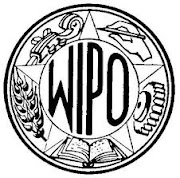Introduction
WIPO
IMPORTANCE
EXAMPLE
The customary production of “molas” have been done by the native Kuna communities in Panama. Although imitations have been produced in Taiwan, “mola” clearly is a product of Kuna’s traditional knowledge which was developed as an expression of their own culture.
Indian folk music is divergent because of India’s vast culture. Bihu is the most well liked folk song of Assam and is comprehensively known across India. Lavani from Maharastra is essentially dance music played general to the foot tapping beats of the dholki. Naatupura from Tamil Nadu this music consists of Gamathisai, which is the folk music of the village and Gana, the city folk music. The songs are generally accompanied by traditional drums and Shehnai and they’re often accompanied by traditional dance performance. Maand from Rajasthan the soulful music with its expressive scales of the Sarangee, and the lyrics talking about the life in Rajasthan in their very own nuances, is neither regarded fully classical nor folk.
PROTECTION OF TRADITIONAL KNOWLEDGE
Several projects have been in the IPRs system, to “protect” traditional knowledge. Such motions often deteriorate to set out clearly the rationale for its protection. Any system of protection, however, is a mechnasim for achieving certain objectives. Therefore, a principle question, before considering how traditional knowledge may be protected, is to define why it should be.
One reason for a lack of accuracy about the rationale for protection stems from the different meanings given to the concept of protection. Some understand this concept in the context of IPRs, where protection essentially means to exclude the unauthorised use by third parties. Others regard protection as a tool to preserve traditional knowledge from uses that may erode it or negatively affect the life or culture of the communities that have developed and applied it. Protection here has a more positive role in supporting TK-based communities livelihoods and cultures.
There have been two types of intellectual property protection and they are ;
-Defensive protection
Its main objective to stop people outside the community from acquiring intellectual property rights over traditional knowledge. Defensive strategies are also used to for the protection of sacred cultural manifestations, for example sacred symbols or words from being registered as trademarks.
-Positive Protection
It the granting of rights that empower communities to promote their traditional knowledge, control its uses and benefit from its commercial exploitation.
NEED FOR PROTECTION OF TRADITIONAL KNOWLEDGE
Traditional knowledge holders face various difficulties. In few cases the cultural survival of communities in under threat. There are various aspects which affect the traditional system such as social and environmental pressure, encroachment of modern lifestyle. It is seen that either through acculturation or diffusion many traditional practises and beliefs has been lost. Thus there is primary need to preserve the knowledge that is held by elders and communities throughout the world. Another major issue faced is lack of respect and appreciation for such knowledge which the traditional system fails to get.
IP protection for traditional knowledge can provide a fundamental system, established on transparency and recognition of rights, which will enable the collection, documentation and preservation of traditional knowledge under a cloak of inalienable rights. Application of specific IPRs relating to traditional knowledge assumes the nature of both a defensive posture preserving traditional knowledge in a sui generis international legal mechanism.
CONCLUSION



Impressive,Enjoyed reading the above article , really explains everything in detail,the article is very interesting and effective.Thank you and good luck for the upcoming articles
Thank you so much